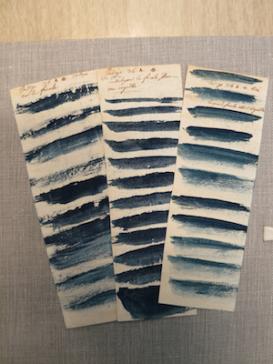In 1750 Michel Adanson, a young French naturalist attached to the Compagnie des Indes at its outpost in Senegal, sent several small swatches of cotton fabric to Paris. He had dyed the swatches himself, using various preparations of indigo grown locally and following practices he had learned from native inhabitants. While collecting plants, seeds, and animals for occasional shipment to Paris, he also maintained a small laboratory, an experimental garden, and his own collection of specimens, which eventually accompanied him back to France. The material vestiges of Adanson's experimental activities on African dye plants, scraps of deep blue cloth folded into a letter and now preserved in the archives, raise questions about Adanson's scientific work during his five years in Senegal, and about his fraught relations with Parisian scientific institutions and with the Compagnie des Indes. In reconstructing the conditions and practices of his Senegal operation, this project focuses on the naturalist's negotiations with his local informants, and with his employers and patrons. It situates Adanson's work on indigo in the interlocking networks of science, technology, commerce, and artisanal practices that made natural history possible in the eighteenth century. On the one hand, these experiments and observations depended on the local context of the African villages and gardens where Adanson found his raw materials and his informants. On the other, they also belong to a larger-scale geography of knowledge connecting Adanson in Senegal back to Paris, and to the indigo plantations of Saint Domingue, on the other side of the Atlantic. The analysis complicates the relations between center and periphery by attending to how knowledge and materials (seeds, processed dye material, books) moved in all directions, and how these movements could be blocked by shifting political allegiances at local, long-distance, company, and state levels.

Indigo dye test strips, from Adanson=s trials in Senegal, 1751. Courtesy of Hunt Institute for Botanical Documentation, Carnegie Mellon University.
Project
(2013-2014)
Encounters with Indigo: The Circulation of Natural Knowledge Among French Colonies in the Eighteenth Century
- Mary Terrall
